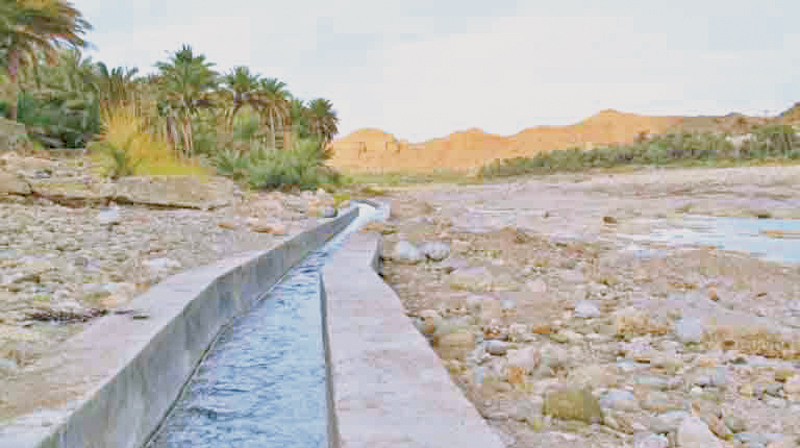

MUSCAT, APRIL 27 - More than a third of Oman’s aflaj systems — the lifeblood of numerous mountain and rural communities around the Sultanate — have been lost to climate change, according to an Omani water specialist. Dr Salim Ali al Maamari (pictured), Board Member of the Oman Water Society, called for the formulation of a national strategy to mitigate the impacts of climate change on the nation’s aflaj — ancient water channels that lie at the heart of Oman’s heritage, he said.
Addressing delegates at the Oman Energy & Water Expo, which was held at the Oman Convention & Exhibition Centre (OCEC) last week, the scientist said: “Data analysis shows a high impact of climate change on aflaj system, causing 27 per cent of aflaj to dry out with others in serious decline. This equates to around 1,095 aflaj that have dried out, representing 27 per cent of a total of 4,112 aflaj (per the Falaj Inventory of 1997), while another 12.6 per cent have since been added to the list.”
Earlier, Dr Al Maamari underlined the importance of aflaj systems to local communities. “Aflaj irrigate about 18,536 hectares, representing around 30 per cent of the farmed area of Oman. In rural areas, this rises to 90 per cent of cultivated land, with date palms accounting for 83 per cent of this area. They provide greenery to otherwise dry mountain landscapes and are thus important to tourism in these areas. Aflaj are also an important source of income to rural communities,” he said.
Recognising their importance, Unesco has placed five of Oman’s falaj systems on its World Heritage List,” the water expert noted.
In terms of their water output, Oman’s active aflaj systems produce an astounding 552 million cubic metres of irrigational water per annum, representing around 38 per cent of natural water resources available to the Sultanate, said Dr Al Maamari.
But rising temperature and declining precipitation trends have been taking a toll on the nation’s aflaj systems, according to the official. “Higher temperatures are threatening increased evaporation of falaj water, with the result that irrigation demand grows in the aflaj area,” he warned. Depending upon the harshness of the ensuing drought, local livestock is subject to increased heat stress, crops are prone to pests and diseases, output yields decline, rangeland productivity falls, and local communities face challenges as a result, he said.
A decrease in rainfall, attributable to climate change, can also result in a series of problems for local communities. Falaj flows will decline, while water quality will suffer, potentially resulting in impairment to the falaj ecosystem, he pointed out.
Adverse weather, such as cyclones and storms, also blamed on climate change, can also spawn a different set of challenges for communities dependent on falaj water, he warned. The risk of flood damage associated with climate change phenomena can result in increased flood runoff intensity, which reduces water recharge to the aquifer. Additionally, floods can damage the mother well and cleaning shafts, cause siltation of agricultural land, and soil erosion problems as well.
Last week, affirming Oman’s commitment to combating climate change, His Majesty the Sultan issued Royal Decree 28/2019 ratifying the Parish Accord of December 12, 2015, which was signed by the Sultanate on April 22, 2016. It reinforces a pledge by the Sultanate to join the global community in limiting the global temperature increase to well below 2 degrees Celsius.
Oman Observer is now on the WhatsApp channel. Click here



